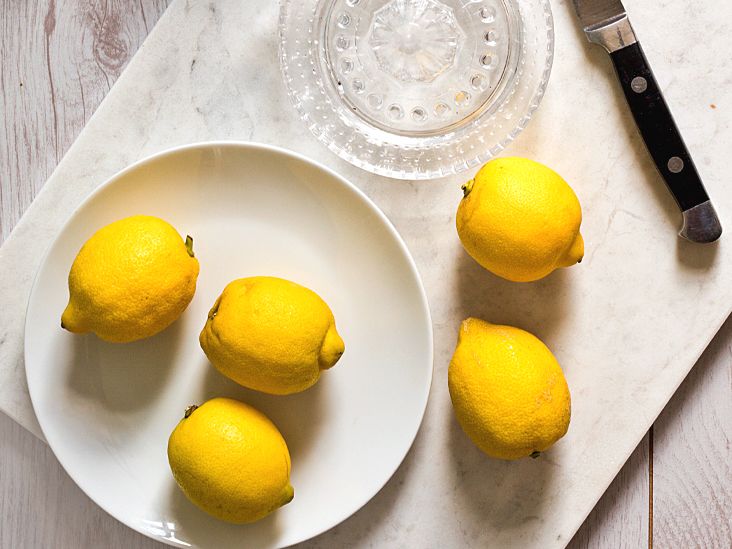Play all audios:
A gallbladder cleanse is a specialized diet designed to keep you from getting gallstones or to treat existing gallstones. However, little research supports it as an alternative to medical
treatments. A gallbladder cleanse is a specialized diet designed to keep a person from getting gallstones or for treating existing gallstones. Some people may also call a gallbladder cleanse
a “liver flush.” Gallstones are hardened deposits that can develop in the gallbladder and cause pain, nausea, and vomiting if they block one of the gallbladder’s ducts. The gallbladder is
responsible for storing the bile that the liver makes. This fluid can help you digest fat more effectively. While the gallbladder helps with digestion, you don’t need a gallbladder to live.
If a person has gallstones that cause symptoms, most doctors will recommend surgical removal of the gallbladder. But some people may try a gallbladder cleanse, or “liver flush,” to avoid
surgery. However, there isn’t a specific gallbladder cleanse that all people follow and more research is needed to support the claimed benefits. Read on for more information about how
gallbladder cleanses work. What are the claimed benefits of a gallbladder cleanse? Some natural and alternative medicine proponents recommend a gallbladder cleanse to reduce gallstones. They
claim the gallbladder cleanse causes the gallbladder to release the gallstones. Ideally, the gallstones then pass through the stool. If this occurs, a person would have fewer gallstones
remaining to cause unpleasant symptoms and could possibly then avoid surgery. Different gallbladder cleanse types exist. There are several “recipes” and folk remedies on the internet from
alternative medicine practitioners. Here are some of the cleanse methods named in the journal Alternative Medicine Review: * LEMON JUICE AND OLIVE OIL. This method involves not eating for 12
hours during the day and then, at 7 p.m., drinking four tablespoons of olive oil and one tablespoon of lemon juice — eight times every 15 minutes. * APPLE JUICE AND VEGETABLE JUICE. This
method involves drinking only apple juice and vegetable juice until 5 p.m. After 5 p.m., drink 18 milliliters (ml) of olive oil and 9 ml of lemon juice every 15 minutes until you’ve consumed
eight ounces of olive oil. Some people may also use enemas along with drinking olive oil and lemon juice to encourage bowel movements. Enemas may contain soap suds or warm water that a
person instills into the rectum. The extra water can stimulate the bowels to move. These methods are just some of those described as a gallbladder cleanse. They typically promote passing
stool and can also cause diarrhea. Most don’t involve making dietary changes for more than a night or two. Is there any research to support a gallbladder cleanse? There’s little research
supporting gallbladder cleanses. According to the Mayo Clinic, a person may see lumps in their stool that appear to be gallstones but are actually lumps of the oil and juice used in the
cleanse itself. According to the Alternative Medicine Review, few people who complete a gallbladder cleanse have had follow-up imaging studies to determine if they actually have fewer
gallstones after the cleanse. Like the Mayo Clinic, the journal article found the lumps that appear to be gallstones weren’t usually made of the common components of gallstones, such as
cholesterol or bilirubin. The journal did point to an early 1990s study that found, using ultrasound, that some people had fewer gallstones after completing a gallbladder flush. However, no
significant medical studies supporting gallbladder flushes have been published since that time. What are the side effects of a gallbladder cleanse? The side effects of a gallbladder cleanse
can depend upon the “recipe” a person uses to do the cleanse. For example, many people use olive oil in their gallbladder cleanse. This can have a laxative effect when taken in large
amounts. Some people may report the following symptoms from using a gallbladder cleanse: * diarrhea * nausea * vomiting Other side effects may depend upon the herbs or other ingredients a
person uses in their cleanse. It’s also possible that a person can do a gallbladder cleanse, and the cleanse won’t work to clear out their gallstones. At that time, they likely need to seek
surgical treatment to keep their symptoms from worsening or their gallbladder from getting infected. What is the outlook for a gallbladder cleanse? Gallbladder cleanses don’t have
large-scale research to support their effectiveness. Cleanses are largely folk remedies rumored to work to reduce gallstones. However, you can take steps to prevent gallstones. This
includes: * eating high-fiber foods * eating healthy fat sources such as olive oil * avoiding eating high-fat foods, such as fried foods, cakes, and cookies. Following a healthy, balanced
diet can also help, because extreme low-calorie diets can increase the risk for gallstones. Because a gallbladder cleanse could cause unpleasant symptoms, you should always check with your
doctor before starting one. A doctor can also recommend other medical treatments. One example is taking the medication ursodeoxycholic acid (Actigall), which helps to dissolve gallstones.
You need to take this medication for six months to a year before the stones are fully dissolved. If you have large gallstones or gallstones that don’t appear to be made from cholesterol, the
medication likely won’t work. As a result, your doctor may recommend surgery if your gallstones are causing symptoms.

